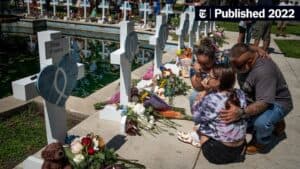Introduction
The Uvalde school shooting was a tragic event that highlighted significant challenges in first responder communication and coordination. In this blog post, we will analyze the communication breakdowns that occurred during this incident, discuss the consequences of these failures, and explore how unified communication systems like C2 Platforms could have made a difference.
The Incident: Uvalde School Shooting
On May 24, 2022, a tragic school shooting occurred at Robb Elementary School in Uvalde, Texas. The shooter, armed with an assault rifle, entered the school and opened fire, resulting in the deaths of 21 people, including 19 children and 2 teachers. The incident highlighted several critical failures in communication and coordination among first responders, which contributed to the tragic outcome.
Communication Breakdowns
Initial Response
One of the primary issues during the Uvalde school shooting was the lack of effective communication during the initial response. Officers arriving at the scene struggled to establish a clear line of communication with dispatchers and other responding units. This delay in communication led to confusion and hesitation, preventing a swift and coordinated response.
Lack of Real-Time Information
Another significant problem was the lack of real-time information available to first responders. Officers on the ground were unaware of the exact location of the shooter and the number of victims. This lack of situational awareness hampered their ability to make informed decisions and effectively address the threat.
Radio Congestion
The incident also highlighted the issue of radio congestion. With multiple agencies responding to the scene, radio channels quickly became overloaded, making it difficult for officers to communicate critical information. This congestion led to delays in sharing vital updates and coordinating actions.
Inefficient Resource Allocation
Due to the communication breakdowns, there was also a failure in efficiently allocating resources. Officers and emergency medical personnel were not directed to the areas where they were needed most, resulting in delays in providing medical assistance to the victims.
Consequences of Communication Failures
The communication failures during the Uvalde school shooting had severe consequences, including:
- Delayed Response: The lack of clear communication led to delays in the initial response, allowing the shooter to continue his rampage.
- Increased Casualties: The inability to quickly locate and neutralize the shooter, combined with delays in medical assistance, contributed to the high number of casualties.
- Confusion and Hesitation: The lack of real-time information and radio congestion caused confusion and hesitation among first responders, further impeding their ability to respond effectively.
How Unified Communication Could Have Made a Difference
Unified communication systems like C2 Platforms could have significantly improved the response to the Uvalde school shooting. Here’s how:
Enhanced Situational Awareness
C2 Platforms provides real-time, interactive maps that display the location of all responding units and the incident’s key details. This enhanced situational awareness would have allowed officers to quickly identify the shooter’s location, coordinate their actions, and respond more effectively.
Streamlined Communications
By integrating multiple communication channels into a single platform, C2 Platforms reduces radio congestion and ensures that critical information is shared swiftly and securely. This would have enabled responders to communicate more efficiently and coordinate their efforts without delays.
Efficient Resource Allocation
C2 Platforms’ real-time data and resource tracking capabilities allow for better allocation of personnel and equipment. During the Uvalde incident, this would have ensured that officers and medical personnel were directed to the areas where they were needed most, potentially reducing casualties.
Improved Decision-Making
With access to real-time information and a unified communication platform, first responders can make more informed decisions. This improves their ability to address threats, provide medical assistance, and manage the overall response more effectively.
Conclusion
The Uvalde school shooting was a tragic event that underscored the critical need for improved communication and coordination among first responders. By adopting unified communication systems like C2 Platforms, agencies can enhance their situational awareness, streamline communications, and ensure a more effective and efficient response to emergencies. The lessons learned from Uvalde highlight the importance of investing in advanced communication technology to save lives and protect communities.





